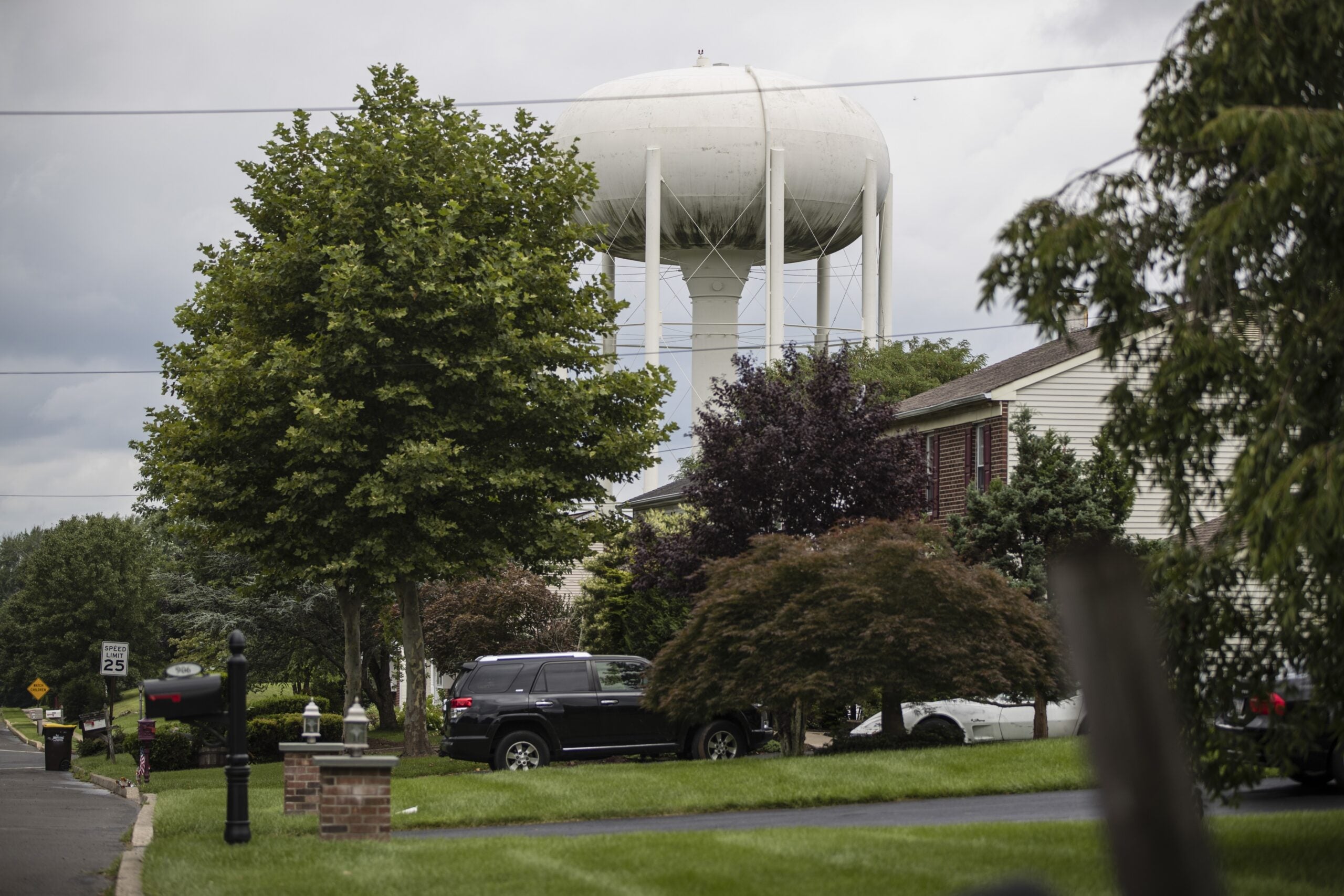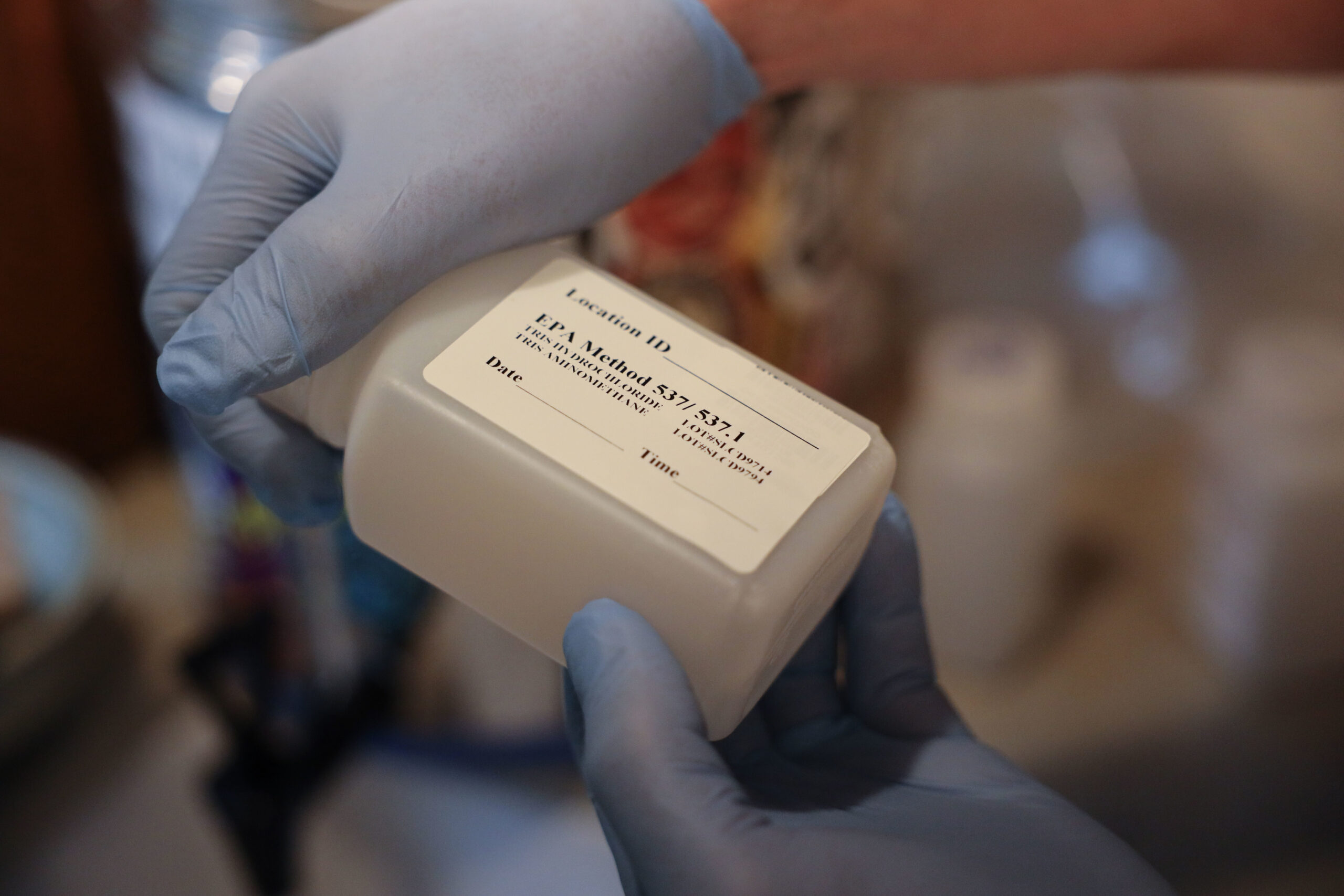Gov. Tony Evers has issued an executive order aimed at addressing contamination from chemicals known as PFAS that are found in products like firefighting foam and nonstick cookware.
The executive order directed the Wisconsin Department of Natural Resources to create a PFAS Coordinating Council and partner with other state agencies, as well as establish a public website on the risks of the per- and polyfluoroalkyl substances to public health and the environment.
In addition, Evers asked the DNR to coordinate with the state Department of Health Services and state Department of Agriculture, Trade and Consumer Protection on expanded PFAS monitoring.
Stay informed on the latest news
Sign up for WPR’s email newsletter.
“The governor is directing the secretaries of each of the agencies to closely collaborate on making sure we have a unified plan to address the issue,” said Jim Zellmer, deputy administrator in the DNR’s division of environmental enforcement.
State health officials proposed new groundwater quality standards for PFAS at 20 parts per trillion in June, which is more restrictive than the 70 parts per trillion advisory level set by the U.S. Environmental Protection Agency. An agency within the Centers for Disease Control and Prevention states some studies have shown the chemicals can cause reproductive or developmental issues, thyroid disease and an increased risk of cancer.
Eric Uram, national chair of Sierra Club’s Toxics Committee, said Wisconsin lags behind neighboring states in addressing PFAS.
“We need to get after these things,” said Uram. “They’re affecting the health of communities. They’re affecting property values. They’re affecting children’s ability to think and be children and to grow up to be healthy adults.”
State Rep. John Nygren, R-Marinette, released a statement outlining the lawmaker’s work to address PFAS contamination through legislation, noting he’s “happy to see that Governor Evers is now taking this issue seriously.”
“It is vital that any work stemming from this Executive Order is carried out in a measured, deliberate, and transparent fashion by bringing a wide variety of stakeholders to the table and using reliable science,” said Nygren in the statement.
The DNR has been addressing PFAS contamination at the Tyco Fire Products fire training center in Marinette. Other sites in Wisconsin, including Madison and Milwaukee, have turned up traces of the chemicals.
Some business groups have expressed concern over proposed state groundwater quality standards, including Wisconsin Manufacturers and Commerce (WMC). Scott Manley, the group’s senior vice president of government relations, said the governor and his administration have been excluding input from stakeholders on proposed water quality standards and potential changes to the law.
“And now (Evers) comes out with this executive order with no input from the businesses, the local governments and the water ratepayers who will be financially impacted,” said Manley. “We hope that as this regulatory process moves forward that the administration will start to take seriously the concerns that the regulated community has and the homeowners and businesses who will ultimately pay for these types of regulations.”
The proposed groundwater quality standards will go through a lengthy review and rulemaking process. Zellmer said the DNR expects to present a scope statement to the state Natural Resources Board on new standards in the coming weeks.
Among WMC’s concerns is the governor’s directive asking the agency to modify the Voluntary Party Liability Exemption law, which allows site owners to shift long-term liability associated with contamination to the state in exchange for a more thorough site investigation and cleanup. Concerns have arisen surrounding the amount of uncertainty about the long-term effects of PFAS, which don’t break down easily and are known to persist in the environment for long periods of time.
“If we go through a thorough site cleanup and then the state takes on that liability afterwards, we might be taking on the liability for the state taxpayer for contamination that we’re not aware of,” said .
Sponseller said the agency is examining whether to provide a liability exemption for specific contaminants rather than a broad exemption, which could mean site owners may not qualify for any release of liability.
The governor’s executive order also directs the DNR to work with municipalities and wastewater treatment plants to identify potential sources of PFAS contamination. Last month, the agency sent a letter to 125 wastewater treatment plants, including the state’s 27 largest municipal facilities, to test for contamination.
Milwaukee Water Works recently detected very low levels of 2 to 3 parts per trillion of PFOA and PFOS — two of the most widely studied PFAS chemicals. The detections were found in 2017 and 2018 as the result of sampling at 12 sites throughout its water distribution system, said Brian DeNeve, marketing and communications officer with Milwaukee Water Works.
The levels are far below those that have been proposed by DHS to protect public health. The city is exploring the possibility of new treatment technologies, such as granular activated carbon, to treat for the chemicals. However, there’s no plans to implement them in the near term.
State agencies would also explore development of fish and wildlife advisories to protect public health under the executive order. The DNR is currently conducting fish monitoring on the Mississippi River south of the Twin Cities, the La Crosse River near Fort McCoy, the Wisconsin River south of Rhinelander to Wisconsin Rapids, the Menominee River near Marinette and Starkweather Creek in Madison. The DNR says more sites may be included as data becomes available.
Wisconsin Public Radio, © Copyright 2025, Board of Regents of the University of Wisconsin System and Wisconsin Educational Communications Board.





